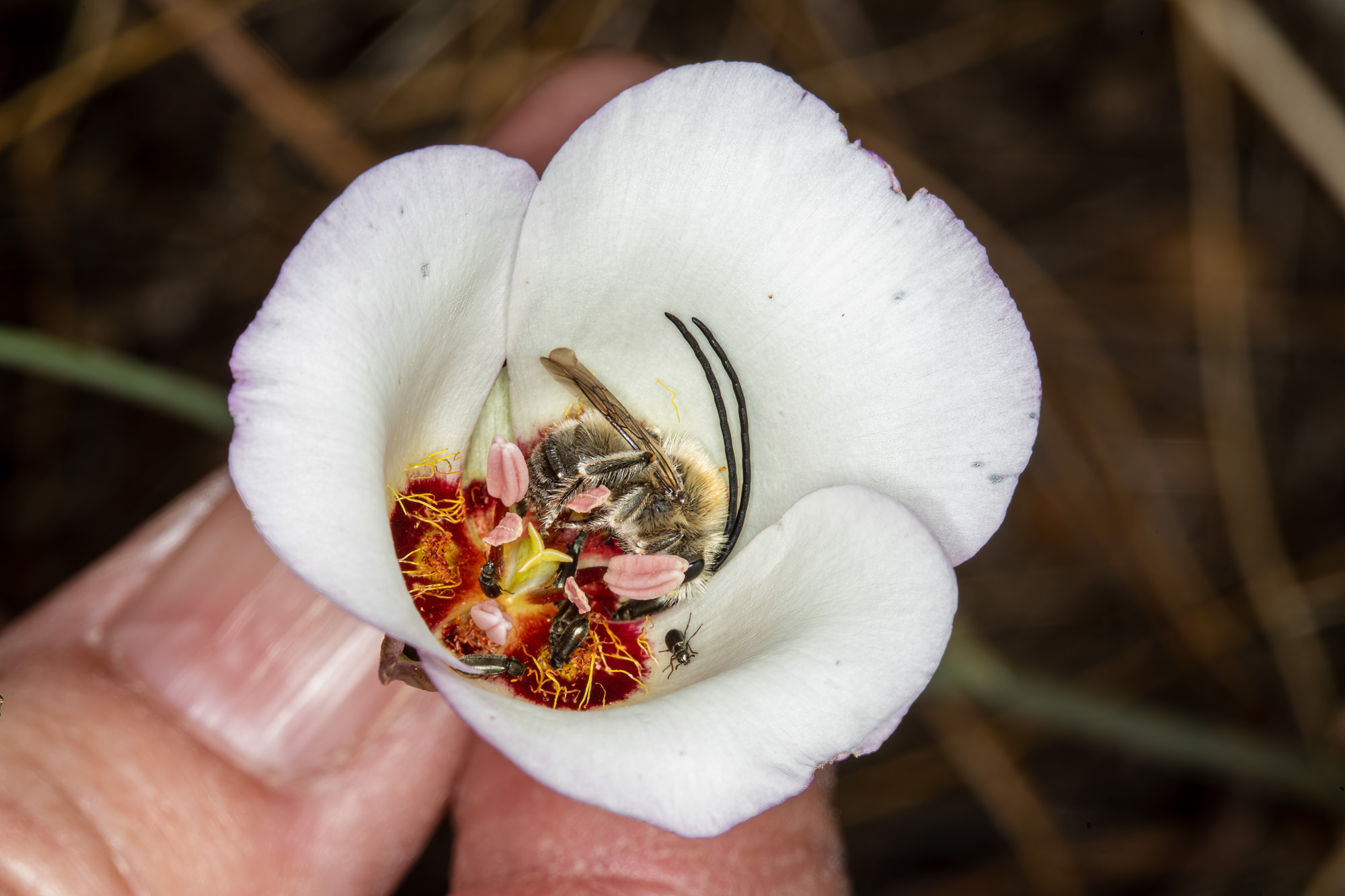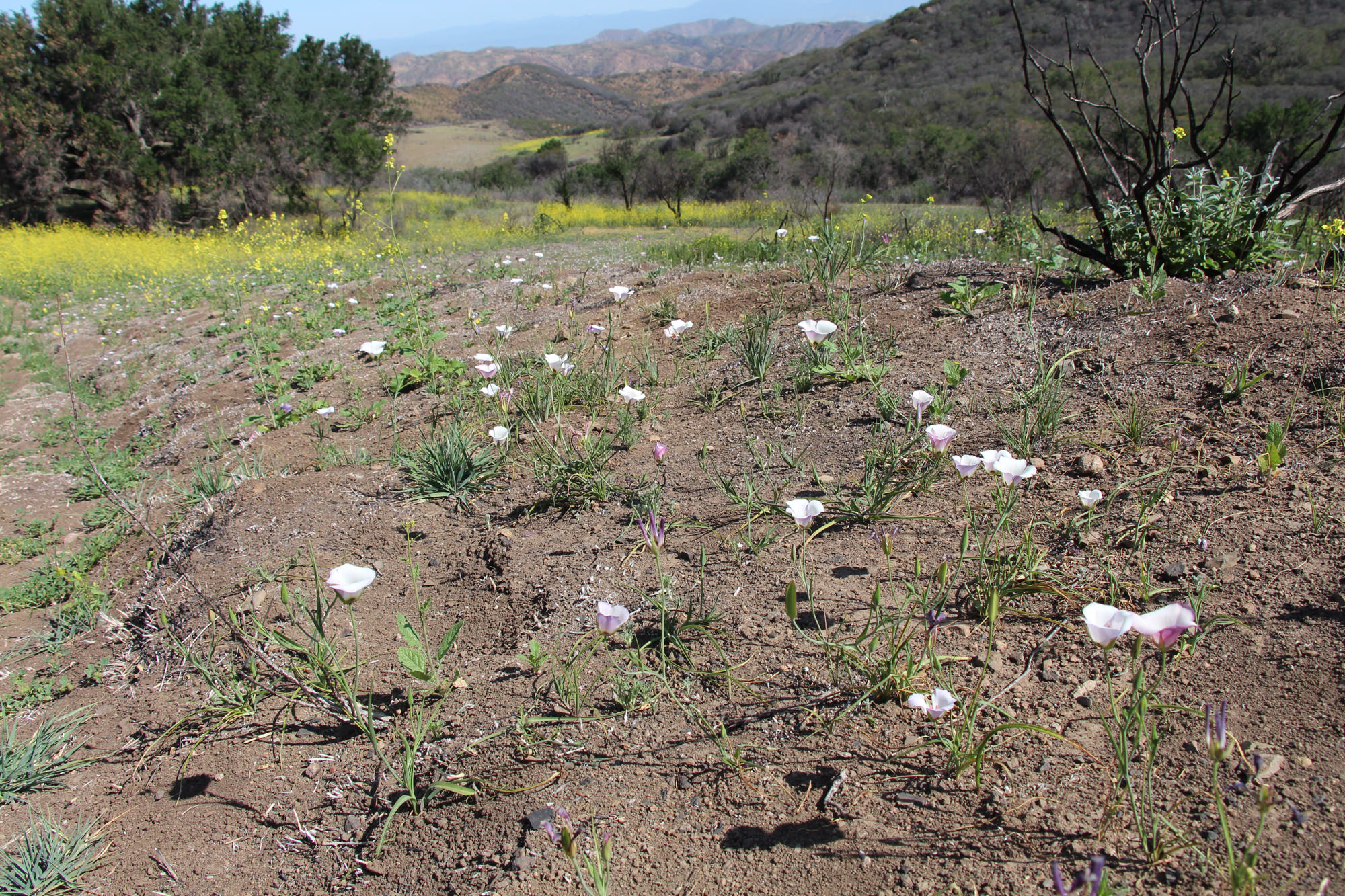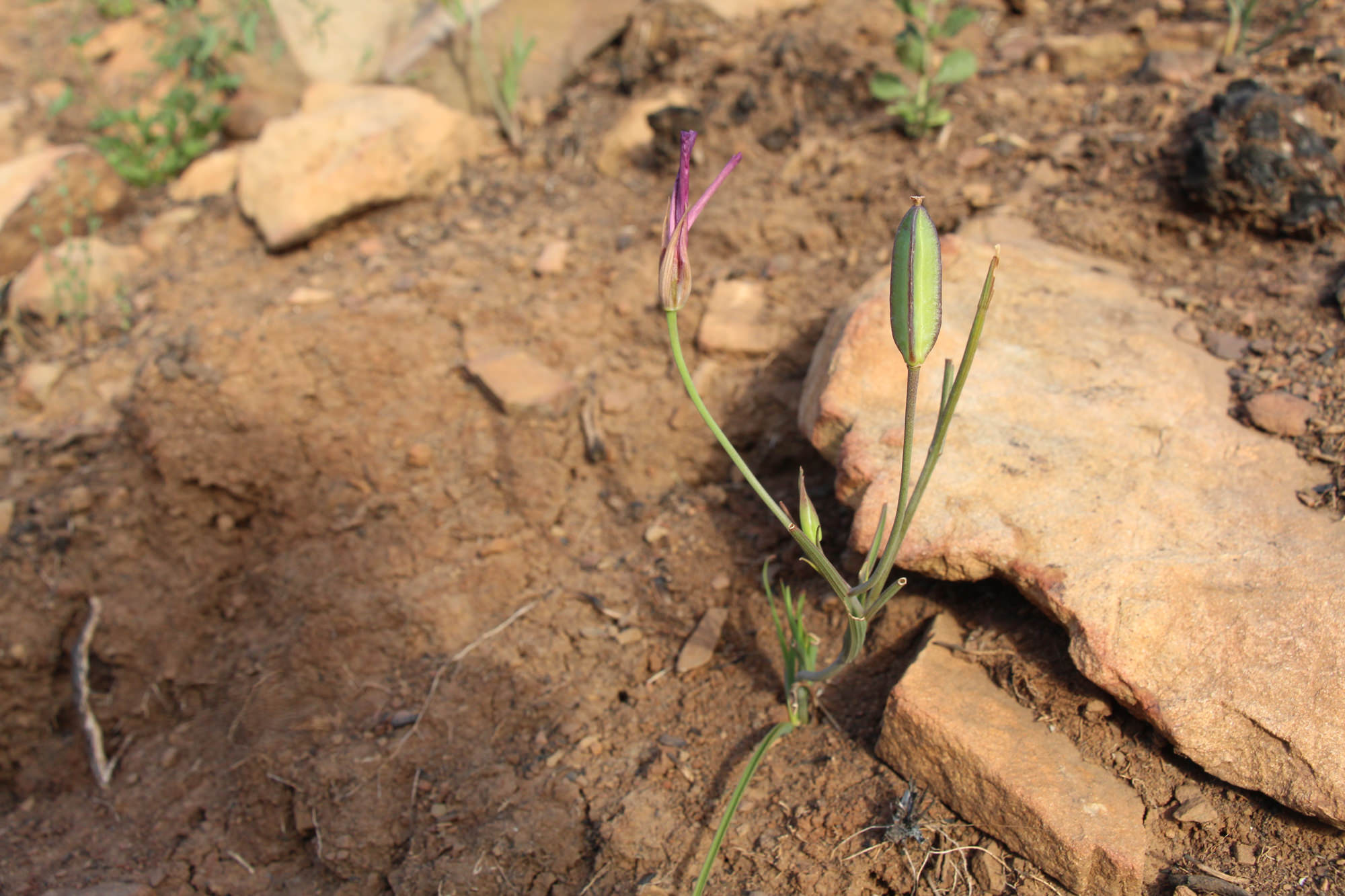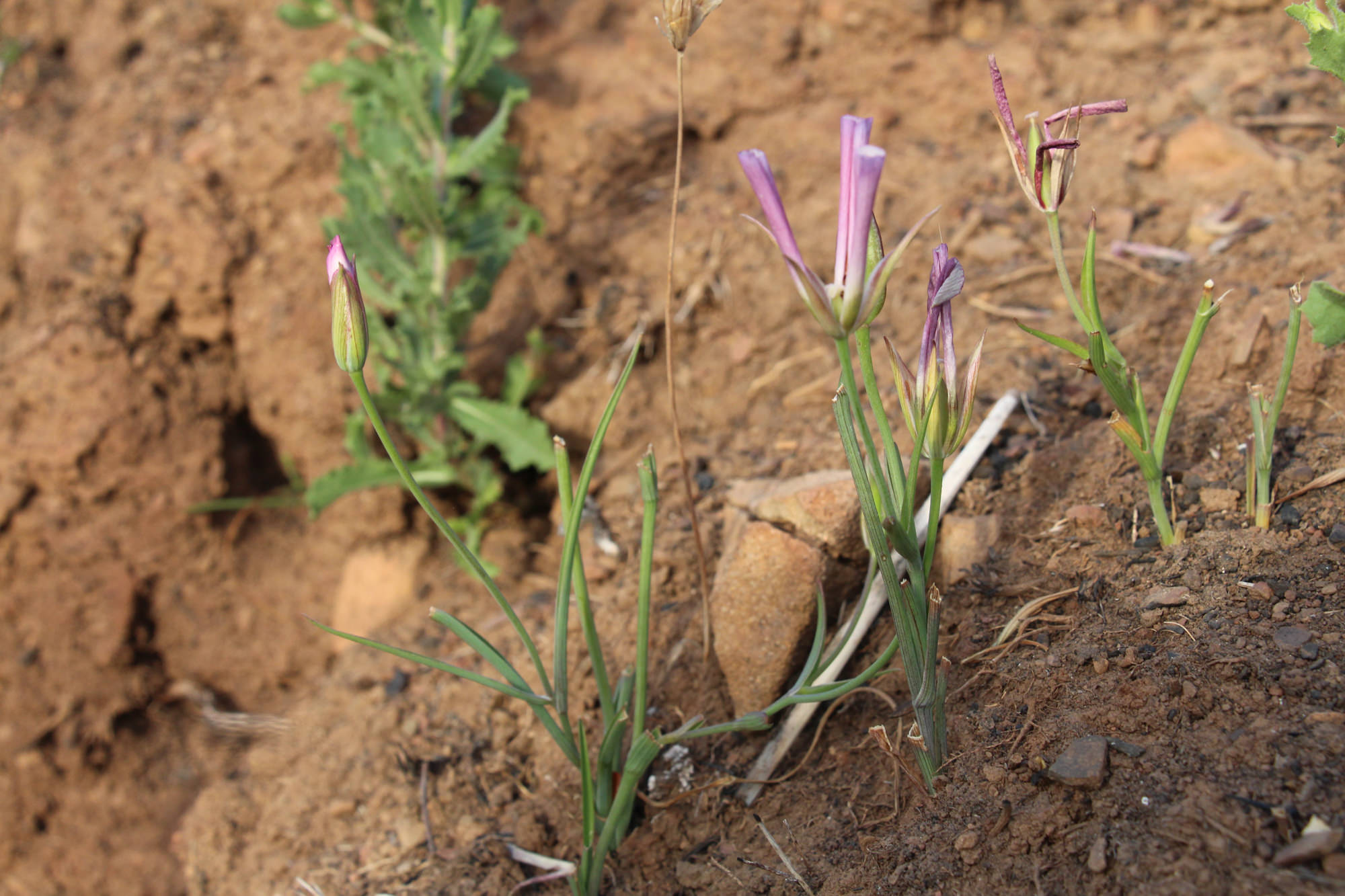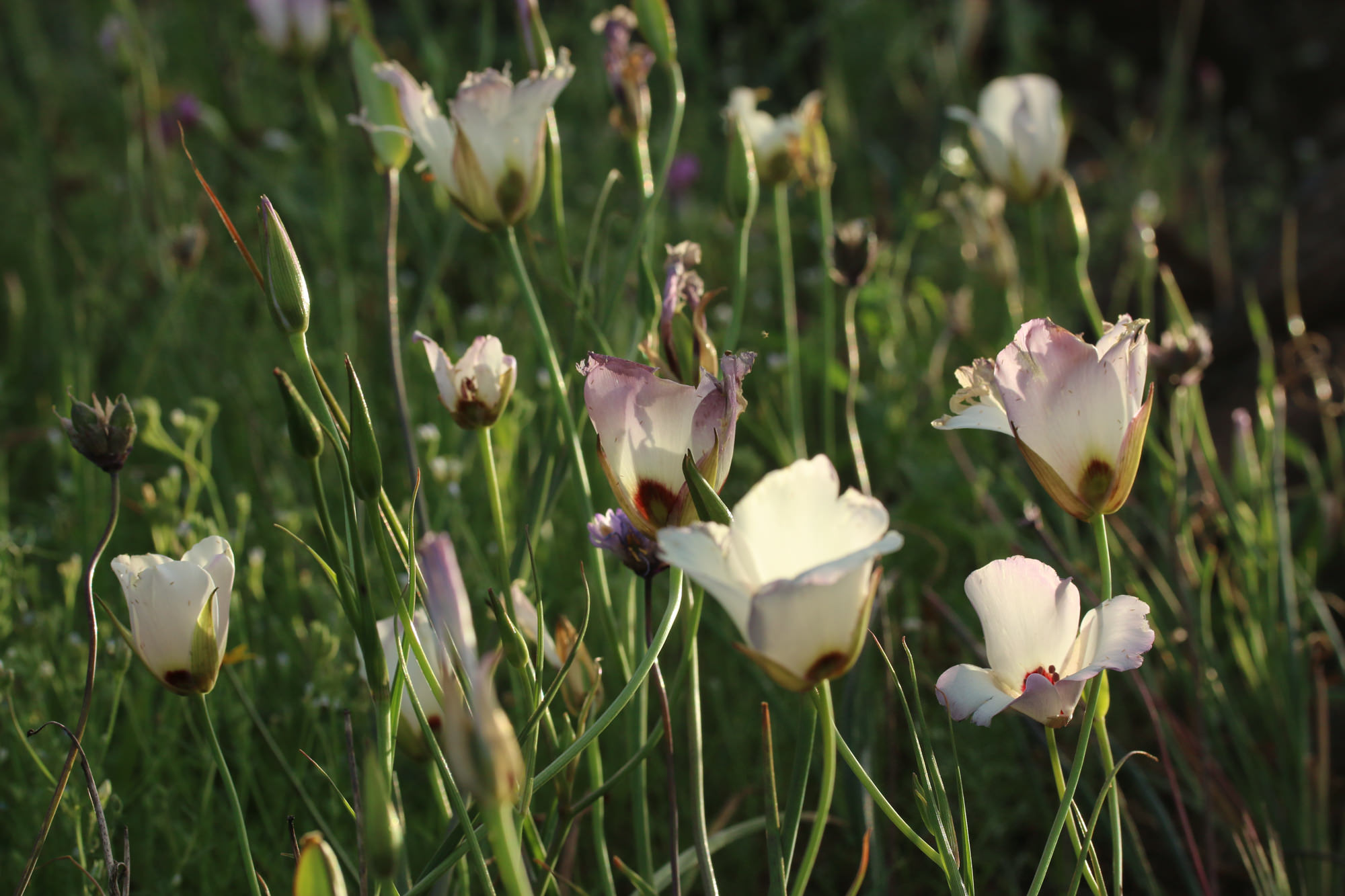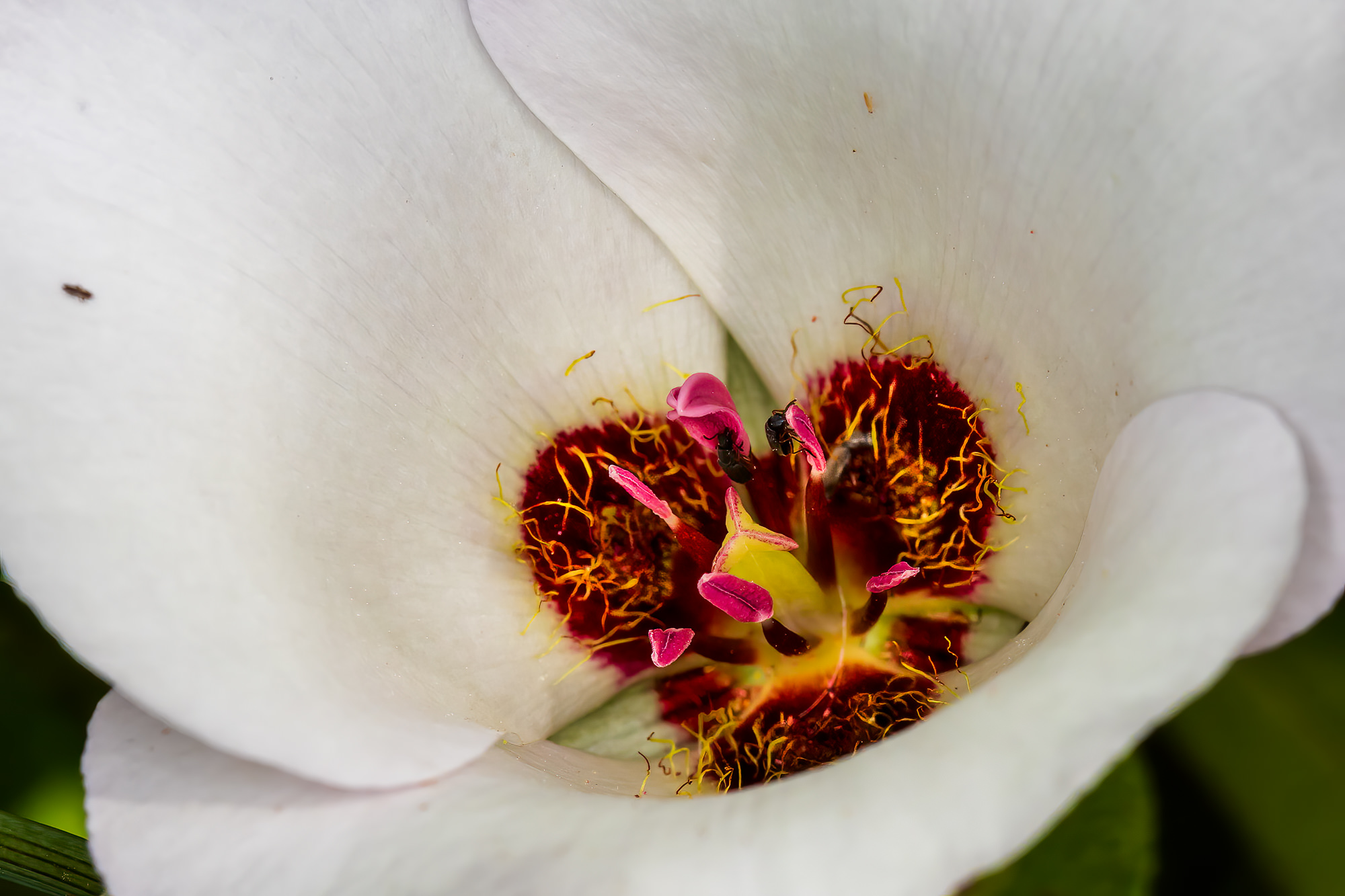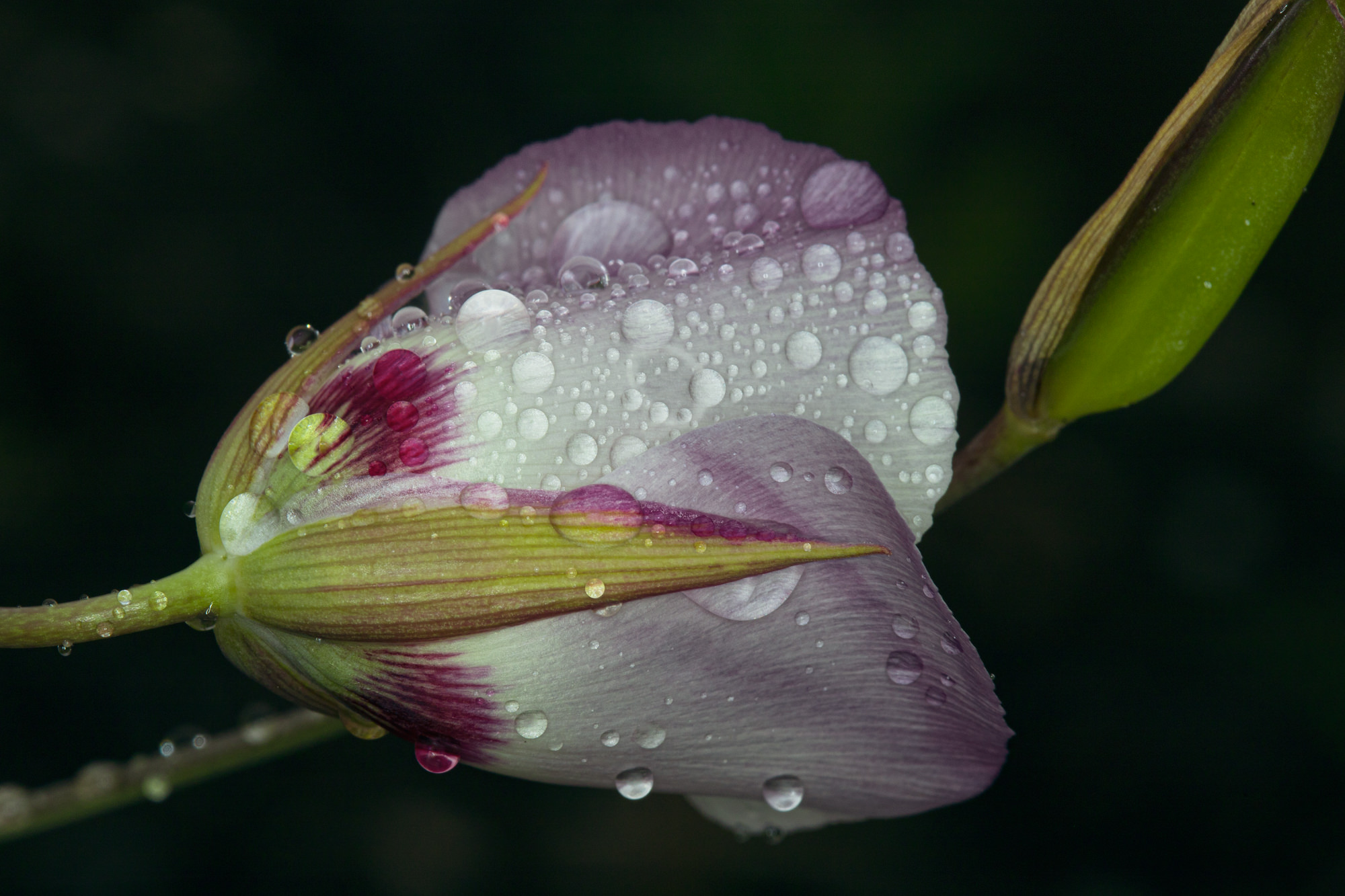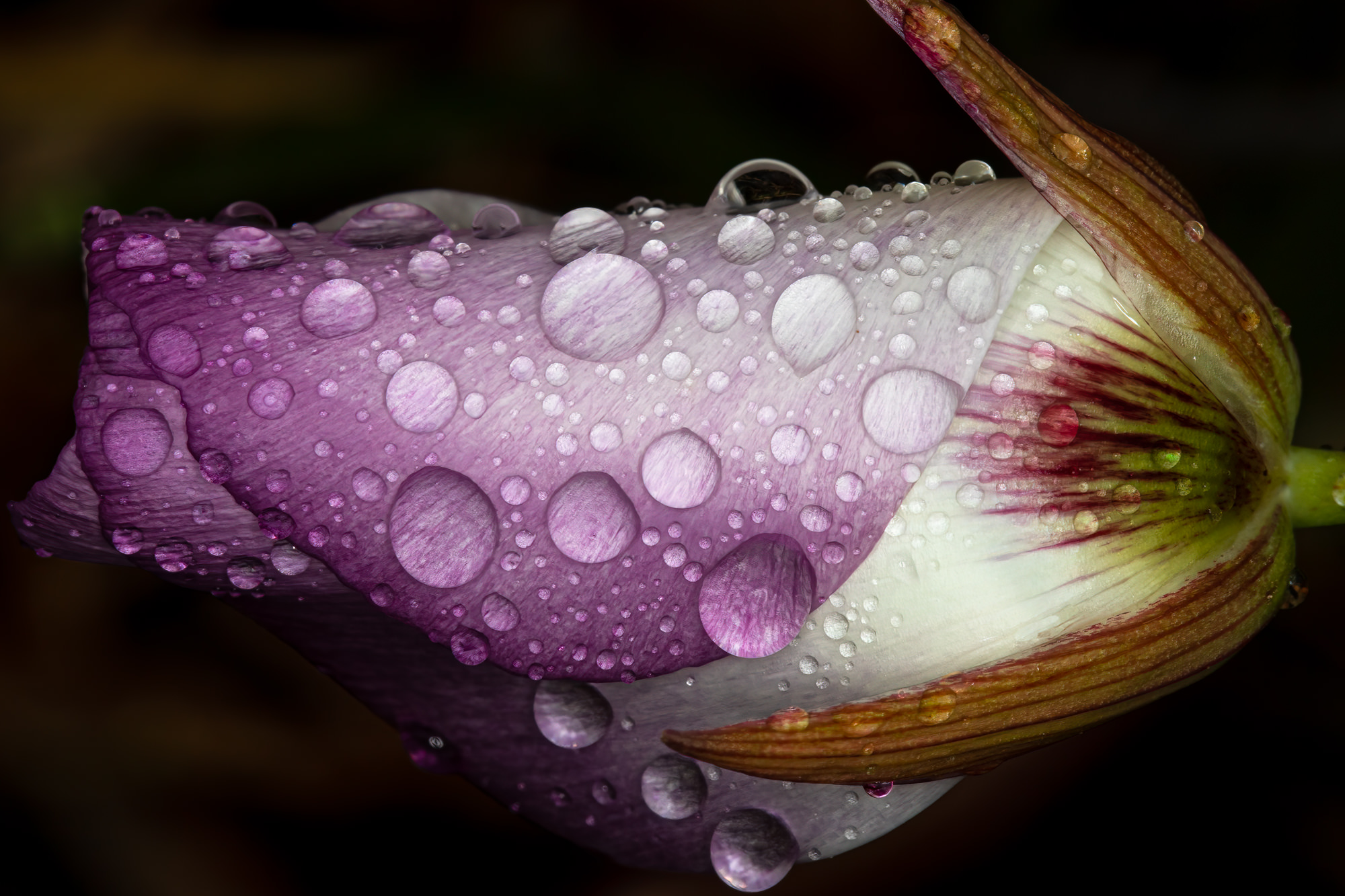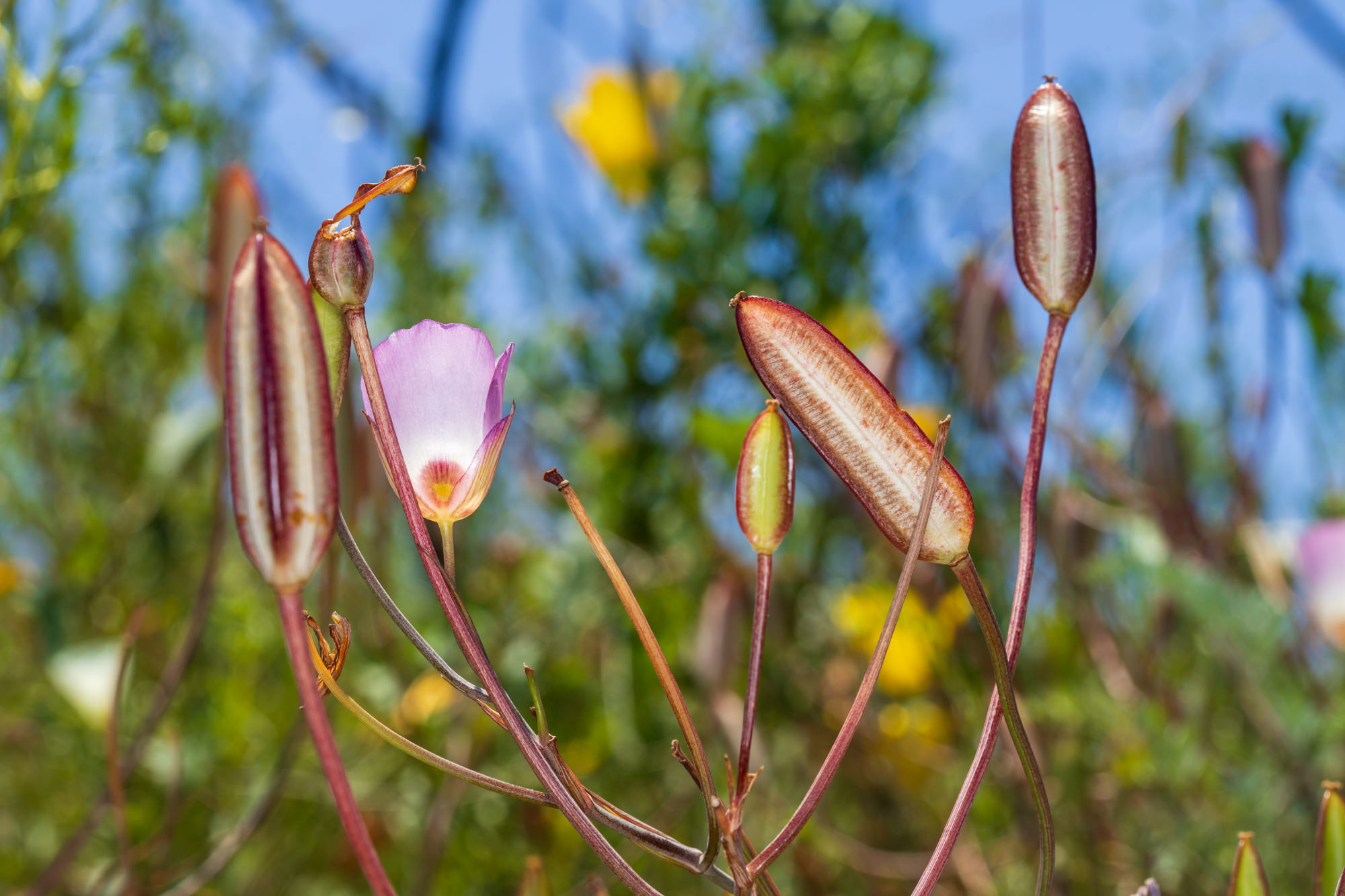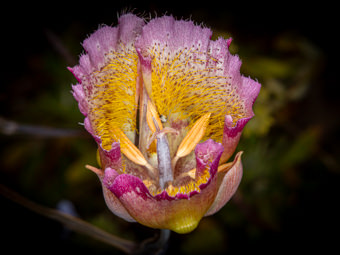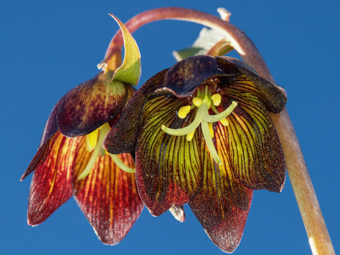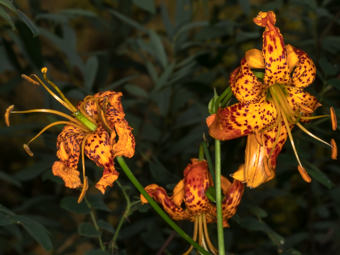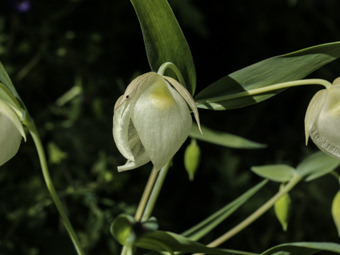Catalina Mariposa Lily
- Calochortus catalinae
| Common Name(s): | Catalina Mariposa Lily |
| Scientific Name: | Calochortus catalinae |
| Family: | Liliaceae (Lily) |
| Plant Type: | Perennial |
| Size: | up to 30 inches |
| Habitat: | coastal, woodlands, chaparral |
| Blooms: | March to June |
| Fire Response: | Seed or Bulb |
Catalina mariposa lily - Calochortus catalinae - is endemic to Southern California. Preferred habitat is in heavy soil near the coastline in grasslands, open chaparral and woodlands. The Channel Islands and the Santa Monica Mountains are among the primary locations for this plant’s distribution.
Calochortus catalinae has a long basal leaf (usually gone before flowers bloom) and tall, branching stems up to 24 inches (60cm). The purple-tinted sepals are nearly as long as the petals. Petals are usually white or very pale pink with a blotch of purple or deep red at the bases. Various bi-colored shades from light pink to rose, lavender to purple, to mostly white are possible. If you look close enough, the petals are nearly smooth with a minimal fringe. Each petal has a nectary (look for the purplish to brown spot). On the other side of this spot are sparse yellow long hairs. The nectary provides the equivalent of “free beer” to lure its pollinators into lingering awhile inside the flower. The six stamens (filament and anther) are usually light in color, often pink are basically welded to the petals and sepals. The pistil (stigma, style, ovary) is topped with a grooved, three pronged pollen collector.
After the flower is pollinated, petals are jettisoned. Over the next few weeks the ovaries will expand and produce seeds. When the seeds are ready the pistil will have dried out and opened. The seed pod is oblong and distinctly shaped.
For the keen observer, several parts of this flower change after opening: the sepals continue growing and the anthers twist as if wringing out pollen. If you look at several plants, you should see the various stages. Come back to the same plant a day or two later with a hand lens and see the changes for yourself.
Calochortus catalinae is the earliest blooming mariposa lily in the Santa Monica Mountains. In most years, flowers bloom in early March and are generally done by the end of May.
This plant is considered “rare”. A number of factors have created the rationale: Habitat for this plant is also great for homes and neighborhoods. Fire suppression has reduced the number of smaller fires that previously removed its competition. Finally, this plant has limited distribution.
Fire Response: This plant grows from a bulb that can survive most fires.
Link to Calflora.net - the best source of this fascinating information.
Name Origin: Calochortus: derived from the Greek word kallos for "beautiful" and chortus, "grass," referring to the grassy leaves. The genus Calochortus was published in 1814 by Frederick Traugott Pursh. catalinae: from Catalina Island, referring to the first collected specimen.
Contributed by George Sherman
Featured Plants in the Liliaceae (Lily) Family:
Last modified: August 21 2024 15:18:51.
Number of Images: 11
Image Size Total: 5,102,412
References:
Wildflowers of the Santa Monica Mountains, by Milt McAuleyFlowering Plants: The Santa Monica Mountains, Coastal and Chaparral Regions of Southern California, by Nancy Dale
Chumash Ethnobotany: Plant Knowledge Among the Chumash People, by Jan Timbrook
Leaf Shapes Primer - Botanical Terms for Leaves: - Link

